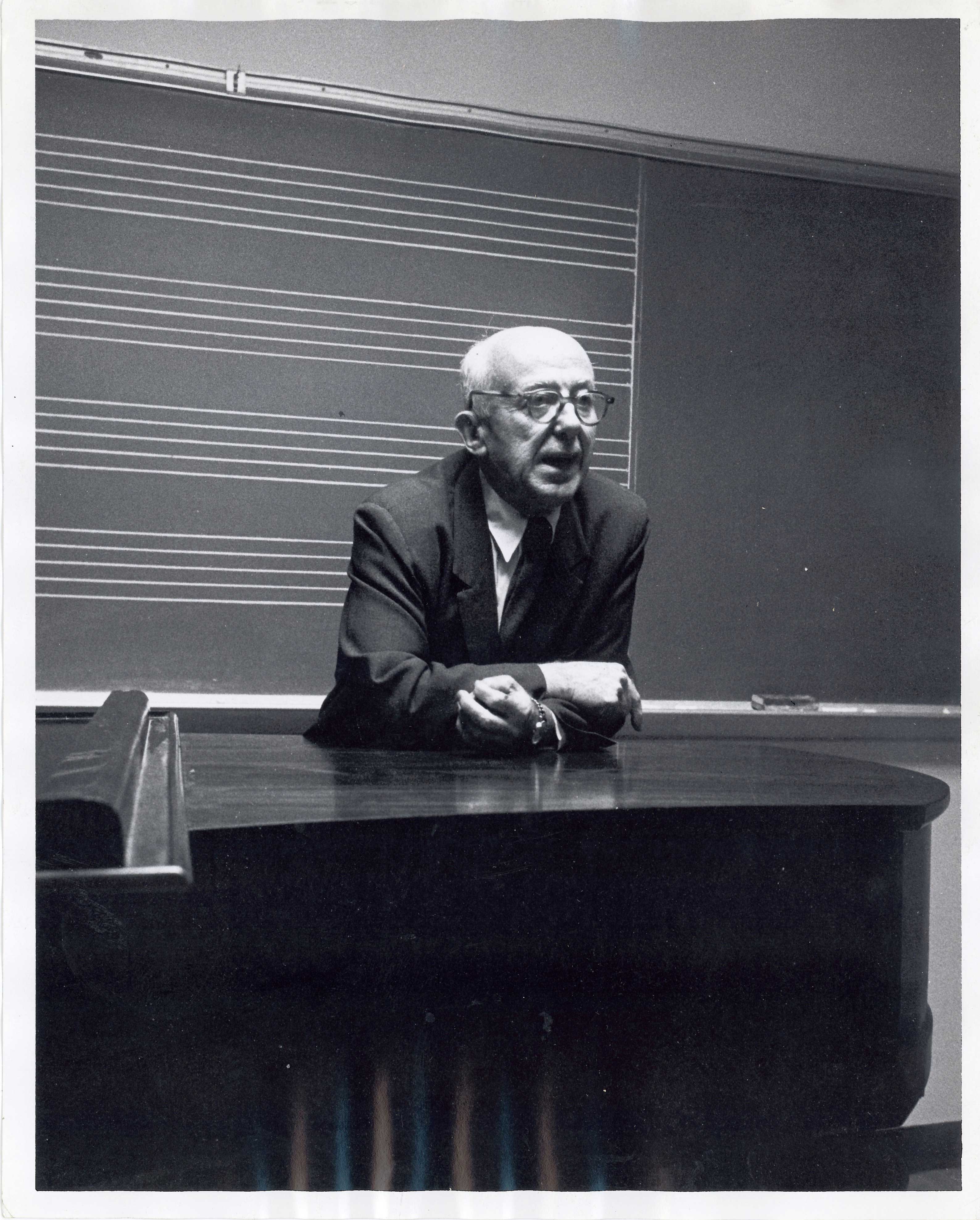by Sally Bick, Associate Professor of Musicology, University of Windsor, Canada
An American modernist composer during the 1920s and 30s was, for all intents and purposes, not on the radar screen. Not only was he/she unnoticed but in some quarters even distained by the mainstream concert community. To be American and modernist in the same breath carried a double burden. On the one hand, they were committed to new music, the experimental and the unorthodox, and on the other, they were home-grown, a mark that labeled them parochial in the eyes (and ears!) of New York’s music audiences. The highbrow world of classical music was insular, a community defined by long standing traditions, and especially European ideals and class-consciousness. New York’s concert world was satisfied to import music lock, stock and barrel from Europe.
The New School helped to change that situation. Yet, when scholars began to publish on American music and musical culture, the New School for Social Research was left out of the historical picture even though scholars recognized that lots had been brewing there. One got a glimpse of this musical activity from the correspondence that emerged from various American composers such as Aaron Copland, Charles Ives, Ruth Crawford Seeger and later Henry Cowell, all of whom wrote private letters exclaiming that they were “giving a concert at the New School,” “presenting a lecture at the New School,” “meeting colleagues at the New School,” “organizing a class at the New School.” It seemed that almost every important American composer had an association with the New School for Social Research in one way or another, but few if any publicly wrote about it.
When I began to explore music at the New School, I understood why this history had been problematic or even suppressed. For one thing, Henry Cowell’s wife Sidney Robertson had protected his papers, making them unavailable to contemporary historians. Cowell, considered a maverick and bohemian composer, directed the musical activities at the New School from 1930 until 1963. In 1936, however, he was imprisoned for four years at San Quentin having pleaded guilty to having oral sex with a young male, an act punishable by the law. Alvin Johnson, the New School’s director, never held this against him. Johnson even offered to be one of his parole sponsors if needed—Cowell returned to the New School in 1941—but Sidney Robertson felt she needed to control his legacy and therefore Cowell’s archives were not available to scholars until 2001. (Even then a finder’s index to use them was not in place until 2006.)
Another problem was that most references to the New School lay in a multitude of archives of different composers and musicians. Tracking these down would be a monumental task. Finally, and perhaps most importantly, the reputation of the New School preceded itself. The New School was known in musical circles as unorthodox, and a hotbed for left wing activities. Most of the modernist American composers and intellects working at the New School were closely tied to communist-front musical organizations in the 1930s. The School supported their interests in communism and, I might add, their freedoms, by allowing the composers to hold performances, meetings and even classes on Soviet Russia and political songs for “the masses.” After World War II, and even in the recent past, the residue left by Cold War attitudes carried its mark. It inhibited many historians from writing about the New School’s musical legacy and, therefore, suppressed the institution’s role in American musical history. Ironically, Copland composed some of the most important American patriotic music today, heralded in celebrations like President Obama’s inauguration. Yet that music was aesthetically shaped by the communist influence and ideals circulating at the New School in 1930s of which Copland was apart.
After completing my dissertation in 2001, I headed to the New School and began my own quest to find documents and sources on music at the New School. As a Canadian, my attitude towards communism was different from that of my American colleagues. My goal then was to reveal the important musical legacy of the New School, politics and all.

Even at the New School, finding documents proved to be very difficult as Fogelman librarian Carmen Hendershott would attest. Carmen had shown me some scrapbooks organized chronologically, revealing that the School had hired a clipping service to collect newspaper articles on the School’s faculty and their activities since 1919. But many scrapbooks were lost. One day, Carmen allowed me to explore the stacks and in the corner there was a rusted aged filing cabinet with an old smelly lunch sitting on top. I really did feel like a detective, perhaps a spy, when I pried open one of the draws. Eureka!…..I found several scrapbooks that had been lost! I was excited! These scrapbooks are a treasure trove and provided a wonderful contextual history with fascinating details about the activities that took place at the New School. In my own musical quest, they helped to paint the musical picture that scholars were too afraid to touch, and provided some of the vital missing pieces.
Read Sally Bick’s in-depth article on American music during the early years:
Journal of the American Musicological Society
Vol. 66, No. 1 (Spring 2013), pp. 129-190 (62 pages)
Published By: University of California Press